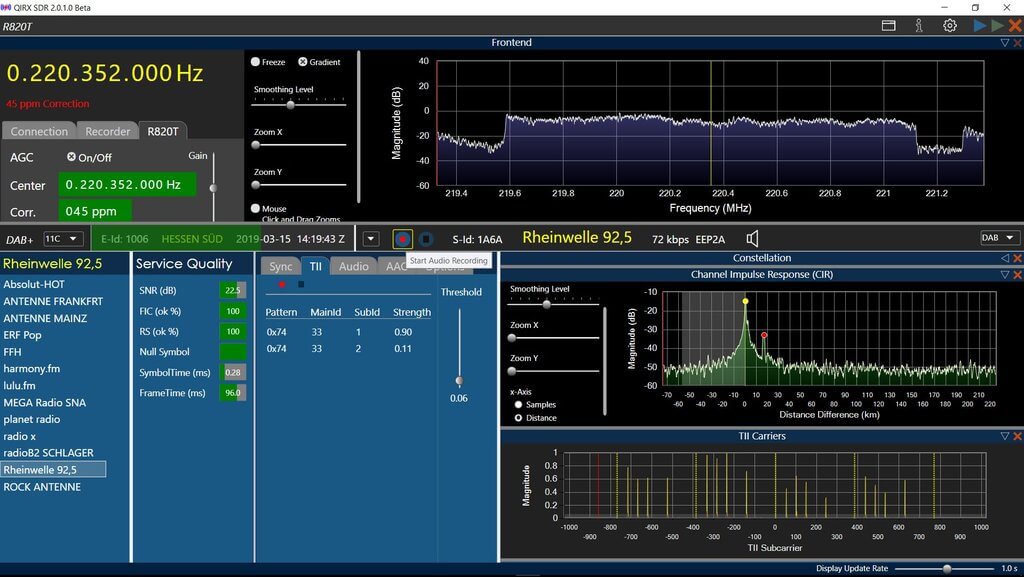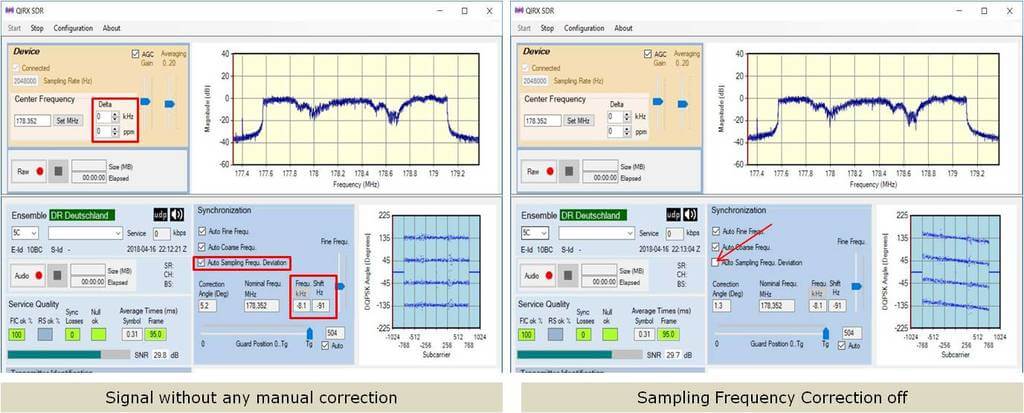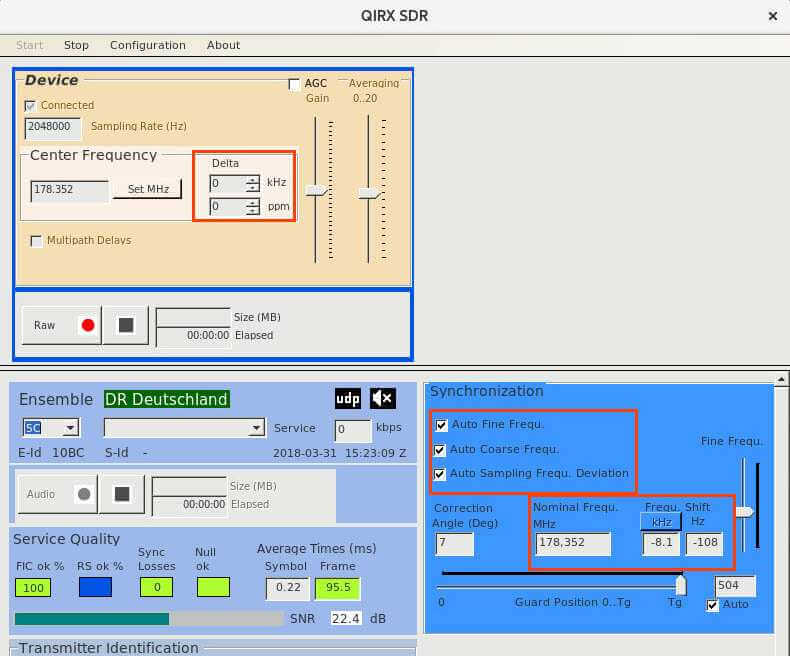QIRX Version 3 Beta: Built in ADS-B Decoder + Map, Multimode, Multi-Receiver
In the past we've posted about the QIRX software a few times as it is an RTL-SDR compatible program that has a focus on DAB+ decoding. However, recently QIRX author Clem wrote in to let us know about version 3 beta, which is now a multi-mode receiver supporting modes such as ADS-B, AM, NBFM, WFM, SSB as well as DAB+ as it did in previous versions. It also now support ADS-B plane mapping, and can run multiple RTL-SDRs at once. We note that this version is not yet available for public download, however you can get the beta by contacting the author (details below). Clem writes:
In short, there are two main new features:
- Multi-Receiver: More than one hardware RX can be connected, all I/Q data are fed via TCP/IP, local or remote. The configuration is read from the config file, per default prepared for three receivers.
- Multimode: DAB, ADS-B, AM, NFM, WFM, SSB (LSB, USB).
As before, TCP/IP drivers for RTL-SDR dongles, the RSPs (RSPDuo single-channel), and Airspy. All binaries are part of the installer.
Although the software is "general purpose", particular emphasis has been given to serve aviation enthusiasts.
- ADS-B: Aircrafts are displayed on the map. Information for about 450.000 aircrafts comes from an open database kindly provided by Opensky-network.org, updateable by the user from within the software, similar like the DAB database. The ADS-B decoder is a C# port of the well-known dump1090 software, with enhancements to decode aircraft ground movements.
- The displayed aircrafts are those within the range of the attached receiver. In contrast to some other applications, it might be noted that the software is capable to decode the movements of the aircrafts not only when airborne, but also on the ground, of course when in range. This might be interesting for plane spotters, perhaps in the vicinity of an airport.
- The AM decoder provides special features when tuned to the airband range and - as should be standard nowadays - 8.33kHz channel separation has been selected. In contrast to older times, in airband communications no longer frequencies in MHz are communicated, but channels. The software (in live mode, not visible in the above picture taken from a file replay) provides an own airband channel selector, directly accepting channel numbers as spoken by ATC controllers. This is paired with the indication of channels in the spectrum, together with the corresponding frequency. With 8.33kHz channel separation, cheap dongles should be calibrated to receive the correct frequency, e.g. with QIRX's DAB decoder (where DAB is available).
Readers interested to give this version a try might send an email to [email protected] and they will receive the current beta version (Win10 .msi installer). As it might not yet have its final stability, it is not yet provided for download. Of course all beta users are requested to give some feedback.

Clem has also provided a YouTube video demonstration 20 minutes of ADS-B and airband voice activity over Zurich airport via the new multi-receiver and ADS-B mapping features in QIRX.


